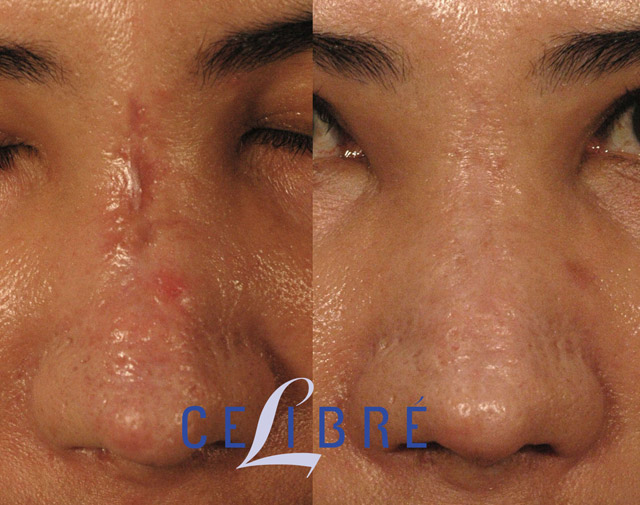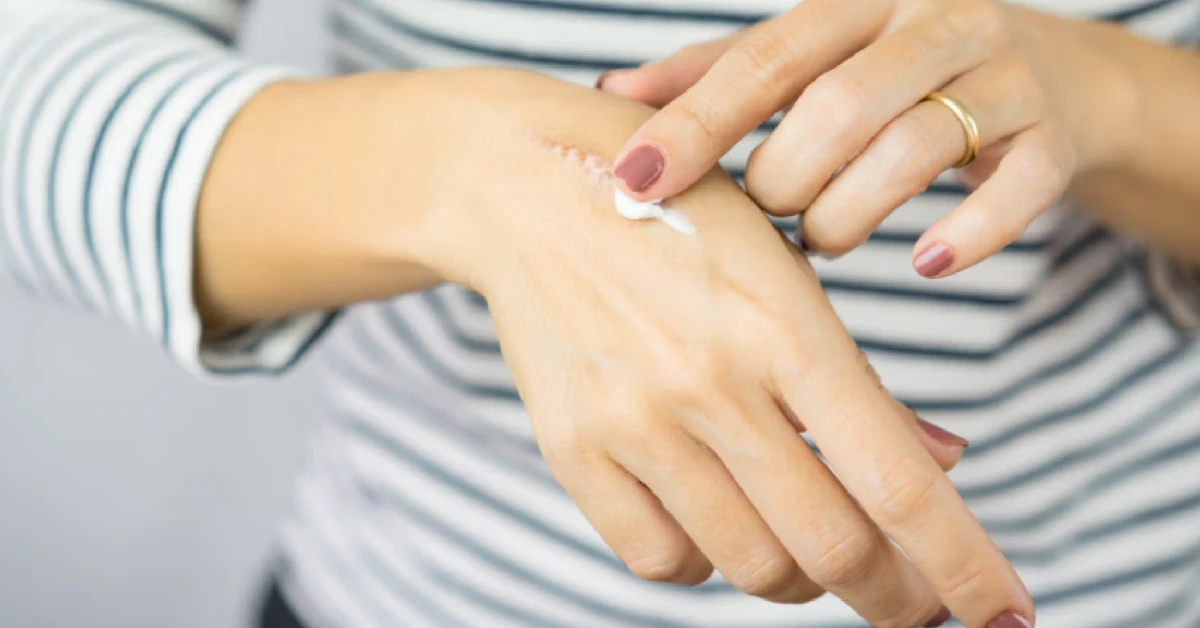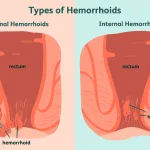Did you know that over 100 million people in the U.S. are walking around with visible scars?
Yeah, I know. That number surprised me too.
Whether it’s a leftover mark from acne, surgery, an accident, or even a tattoo removal session, these little (or big) reminders can stick around long after the original injury has healed.
You’re not alone if you’ve ever sat in the mirror wondering — is there actually anything I can do about this?
Spoiler alert: There is. And no, I’m not talking about slapping any random “scar removal cream” on there and crossing your fingers.
In this post, we’re getting real about what actually helps reduce the appearance of old scars — whether that means choosing the right product, going the natural route, or considering treatments like laser scar removal.
We’re also diving into some questions like: Does laser tattoo removal leave a scar? And if it does, what does that look like?
Let’s walk through it together — step by step. Because our skin deserves a second chance.
What Are Scars, Anyway?
Before we jump into all the fancy creams and cutting-edge treatments out there, let’s talk basics.
A scar is just your body’s way of saying, “Okay, this part of you got hurt. Let me patch it up.” It happens when your skin goes through a traumatic event — cuts, burns, acne, or even surgeries.
Your immune system sends in special repair cells called fibroblasts to close the gap and rebuild the tissue. Sometimes, they go a little overboard, and boom — you’ve got a scar.
Now here’s where things get interesting. Not all scars are created equal.
- Hypertrophic scars: These are raised, red, and usually stay within the original wound boundaries.
- Keloid scars: Think hypertrophic but bolder — they grow beyond the original injury site, sometimes forming a hard bump.
- Atrophic scars: Often caused by acne, these are those sunken-looking ones that make your skin look like a cratered moon.
So naturally, the treatment has to match the kind of scar you’re dealing with. Why? Because different issues call for different solutions.
Can You Really Fade a Scar?
Hey, I totally get it — sometimes it feels like once a scar shows up, it’s here for life. And while technically true, science has come a long way in helping them fade faster and look less noticeable.
But let’s keep it real: The older the scar, the harder it is to completely erase. Fresh scars (think within the first year) tend to respond better to treatment because the skin underneath is still actively repairing itself.
That doesn’t mean nothing works on older scars — far from it. It just means you might need more patience, the right approach, and maybe something a little stronger than basic moisturizer.
Top Pick – Scar Removal Creams That Actually Work
Okay, so before we jump into which scar removal creams work best, let’s set the scene.
You’ve probably been down the “shop-all-beauty” rabbit hole on Amazon, right? Staring at endless rows of tubes labeled “Scar Cream.” Some claim miraculous results… others? Not so much.
Luckily, there are a few standout products that have real skin cred. Let me walk you through a few of them — without doing one of those fluffy, salesy write-ups that leave you more confused than when you started.
Mederma Advanced Scar Gel
This one’s arguably the OG of scar creams. If you ask a pharmacist or a doctor about scar healing, Mederma probably comes up more than once.
Its triple-action formula sneaks under your skin, hydrates, supports collagen balance, and gently fades discoloration. It’s especially good for new acne scars, C-section marks, and small surgical incisions.
I personally know someone who used this religiously after a mole removal — and after three months, I literally couldn’t tell where the scar had been. Nailed it.
Revitol Scar Cream
This one’s packed with plant-based ingredients like aloe leaf, Vitamin A, E, and works on pretty much every kind of scar — old or new, dark or light.
It’s clincally proven and smells like a spa day (which I’m personally obsessed with). Plus, users swear it helps reduce redness and makes scars feel softer over time.
One thing to keep in mind though — you’ll want to use it consistently. Think daily routine territory. Like drinking water or standing up every hour. (Okay, maybe not that boring, but still).
Scargel Vsl4
Used by plastic surgeons and dermatologists alike, Scargel Vsl4 is a medical-grade silicone gel that protects and softens raised scars.
I like this one because it’s super light, won’t mess up your makeup, and best of all — it just works. Great for anyone recovering from major surgery or stubborn acne damage.
X•SCAR for All Skin Types
This brand shines with inclusivity. They have formulas that are perfect for sensitive kids and hyperpigmentation-prone adults with darker skin tones.
X•SCAR combines silicone with antioxidants and botanicals that calm irritation while promoting gentle renewal.
ScarAway Sheets
Now, technically, these aren’t creams — but they’re worth mentioning.
Repeatedly wearing thin silicone sheets on fresh scars can significantly improve their appearance within as little as 60 days.
I mean, full disclosure — you’ve got to slap them on and basically forget they’re there. Kind of like wearing invisible socks to bed. If that’s your vibe, these might be it.
| Product | Best For | Type | Dermatologist Approved? | Results Expected In |
|---|---|---|---|---|
| Mederma | New acne scars | Gel | Yes | 3–6 months |
| Revitol | General use | Cream | Yes | 4–8 weeks |
| Scargel Vsl4 | Raised/keloids | Silicone gel | Yes | 2–4 months |
| X•SCAR | Pigmentation | Gel | Yes | 6–10 weeks |
| ScarAway | Surgical scars | Sheets | Yes | 30–90 days |
Beyond Creams – Natural Remedies For Scars
Natural remedies aren’t flashy — no TV commercials or influencer shout-outs. But for a long time, people swore by them and some, quite literally, work.
Let’s talk options you probably already have in your pantry or beauty stash.
Vitamin E Oil
Yeah, we’ve all seen movie stars slathering Vitamin E on their face. But does it actually help scars?
Slightly — especially for moisture levels and maintaining elasticity. But for thick, raised scars? You’ll probably see more benefit from silicone or medicated formulas.
Aloe Vera
This plant powerhouse is soothing AF. Helps moisturize and regenerate skin cells — great for healing irritation caused by acne or sun exposure.
Coconut Oil or Shea Butter
Better for helping to soften the skin around scars than completely removing them — but hey, softer skin is still progress, right?
Massaging Gently
Did you know that gentle massage increases blood circulation and helps keep scar tissue pliable?
That matters a lot, especially with raised scars — which tend to tighten if they aren’t moved regularly.
Laser Treatments – What’s the Big Deal?
Laser scar removal sounds intense. Big machines, expensive sessions, lots of downtime.
But it’s legit effective — especially for people with deeper acne pits, burn scars, or stubborn hypertrophic spots. For a deeper dive into how laser treatments can help with scars, you might want to check out this post on Laser CO2 Para Cicatrices: What You Need to Know.
How It Works
Laser beams zap away damaged layers of skin, one tiny section at a time. It encourages your body to rebuild fresher, smoother skin in its place.
In medical terms, it’s called fractional resurfacing. In human terms? Like modern-day skin rebirth.
Laser Scar Removal Before and After

Real talk — even the best dermatologists admit that you can’t “remove” a scar completely. But what you can do is dramatically improve its appearance.
The before and after photos always look wild — you’ve seen them on Instagram reels. But the process is slower and more gradual than a single magic wand fix.
What About Laser Tattoo Removal?
This one’s trickier. Tattoo removal lasers blast pigment out of the skin — sounds harmless, right?
Sometimes, yes. But other times, especially with certain skin types or depending on ink color depth, the surrounding tissue can take a hit. That might cause texture changes, hyperpigmentation, or — yep — scarring.
Still interested? Go with an experienced technician and don’t skip test patches.
How Much Do Laser Treatments Cost?
Let’s put it this way — it ain’t cheap.
Depending on where you live, the type of scar you’re treating, and the number of sessions needed, the total investment can range anywhere from $500 to $3,500+.
Each session could be $200–$800 apiece. And you might need 3–6 rounds with breaks in between.
But hear me out: If it gets you the smooth, confident skin you crave and lasts a lifetime? That might make it worth it.
Scar Treatment Must-Dos
Because none of this stuff will work unless you follow a consistent game plan.
Consistency is Queen
Let me repeat: you have to be consistent.
Think about brushing your teeth — it feels pointless to do it once. But do it daily? Suddenly your pearly whites start looking better. Same applies here.
Protect New Skin
Always — and I mean always — wear sunscreen on scars, especially during healing stages.
UV rays mess with newly formed skin more than high school drama club headlines. That’ll undo your progress faster than you can say “hold up…”
Talk to Your Doc
For serious scarring — keloids especially — sometimes professional help is the call. Especially when home remedies just aren’t cutting it.
Conclusion: Better Skin Starts Now
It’s easy to feel like scars have to be permanent guests in our lives — but today’s world offers more science-backed options than ever before.
From smart choices in scar removal creams to clinical interventions like laser therapy, there are paths forward that can truly make a difference.
Want to bring softness back to your skin? Improve tone and texture? Build up confidence? You absolutely can — without drama, without empty promises.
And whether it’s day one of scar healing or you’ve lived with something for years — that’s okay, too. Progress isn’t a race.
Your skin is wise and wonderful. Treat it well — and you’ll get better results, faster.
Got a story to tell or a question to ask? Drop it in the comments — no judgment zone here. Because improvement starts with people supporting each other along the way.


















Leave a Reply
You must be logged in to post a comment.